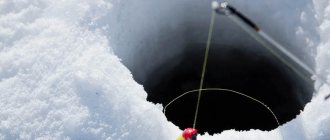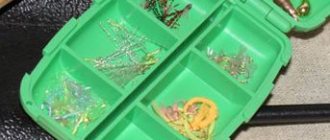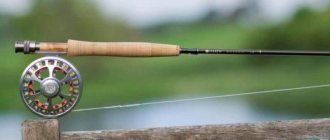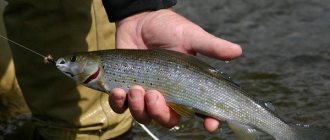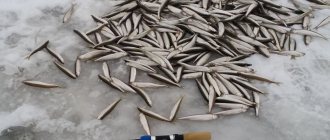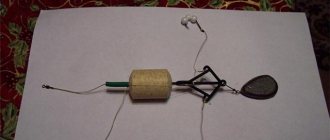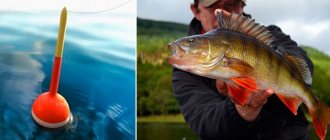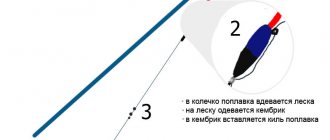Fishing for smelt in winter is quite an exciting and gambling activity. Fishermen in the Gulf of Finland, Sakhalin, the Baltic Sea, Kamchatka and the Far East are especially keen on this. In addition, this is a real delicacy - the original taste of fish, reminiscent of cucumber, cannot be compared with anything else.
A good bite also fuels interest - in one trip you can bring home a fairly rich catch (about 5-6 kg). But, before you go ice hunting for the coveted smelt, you need to properly prepare.
The smelt catch is always rich
Where do you catch smelt in winter?
This small fish usually gathers in impressive schools - one such cluster can reach a ton in mass. Moreover, there are several such schools in one water area of the reservoir. Therefore, the density of accumulation of this fish in certain areas is quite high.
Smelt leads a gregarious lifestyle
To understand the location of smelt schools, it is enough to look at a body of water covered with ice. Where there are the most fishermen, there is a good bite.
Mainly localized at the border of the confluence of small rivers with large ones (bed). Firstly, here the water is more saturated with oxygen, and secondly, the fish are preparing to quickly leave for spawning up the tributaries into small rivers.
Experienced fishermen advise looking for smelt in the following places:
- river tributaries;
- areas with a flat bottom;
- at shallow depths.
Usually they are caught at a depth of no more than 7-8 meters. True, there are exceptions - the fish goes up to 20 meters down (depending on weather conditions). Typically, the fish bites at a distance of 1 meter from the bottom. It is at this level that you need to play with the bait, periodically plunging it all the way to the ground.
Do you need bait?
Fishermen often ask whether bait is needed for smelt? It turns out that properly prepared bait can keep fish in the hole in winter, so the bites will be very frequent and energetic. It is best to feed it with what fish usually eat, and these are amphipods and small shrimp. The most universal bait in this case is bloodworms. Use bait during winter fishing, since in summer you can catch fish with a net: it will come to the shallows on its own, and you won’t have to resort to tricks.
Fishing is more effective with bait
To properly feed a place, you just need to pour bloodworms into the hole. To make the larvae smell better, you can sprinkle them with essential oil. The fish will be tempted by the smell and abundance of food. This method of winter fishing is very effective. Watch a video about catching smelt.
What time to catch
The peculiarity of smelt is that it is active almost around the clock. True, sometimes morning and evening increases in biting are observed. Most anglers hunt during the day, but some stay overnight. In the latter case, you need to acquire an electric generator to generate light.
Night fishing
It is worth noting that smelt is not at all afraid of bright lighting, and is even attracted to it. Often, backlit holes are the most catchy.
The intensity of the bite may depend (fall or increase) on the density of the school - the fish is constantly moving. It happens that the bite stops abruptly as the flock migrates. However, there is a high probability that the fish will return soon.
Tackle and bait for catching winter smelt
Proper equipment is the key to successful ice fishing. Winter gear doesn't have to be fancy.
Tyrants are an excellent equipment
The equipment called “tyrant” is of a certain length (usually about 2 meters). A piece of fishing line at the bottom with a sinker and several tied hooks at the same distance from each other (about 10 cm).
Tyrants
A standard nodless fishing rod for winter fishing is used. Such equipment is fixed on the main fishing line. Therefore, it is effective for winter fishing, especially before spawning, when smelt, due to hunger, rushes to any bait.
The number of hooks may vary depending on the planned diving depth. If we take into account the fact that smelt is found not only in the bottom layers, but also above, then 3-4 hooks are enough. A large quantity often leads to tangling of the gear.
To enhance the bite, it is recommended to make a colored frame on the hooks from latex or multi-colored threads. The result will be something similar to an artificial fly.
The equipment is lowered into the hole until the load hits the bottom. In this case, the line should stretch and hold the sinker in one position. Fishing is passive, but if the bite is bad, you sometimes need to move the tackle. It is advisable to install several fishing rods in different holes and control them, going around one by one.
If the fish is not particularly active, it is worth loosening the tension of the line so that the hooks begin to vibrate more intensely and attract prey.
Jigs and spinners
A variety of artificial baits for luring fish
Bait for smelt in winter should be prepared in advance. In this regard, small jigs or spinners are suitable - special products ranging in size from 4 to 6 mm. Large baits will lead to a decrease in bite.
It is advisable to take different types of jigs when fishing. According to reviews, fish are most attracted to golden and silver options. Copper attachments will not be superfluous in your arsenal. Practice shows which of them will attract prey more.
Flies are a good way to catch smelt
Usually they are caught using all kinds of artificial imitations (larvae, fry, flies, etc.). They are called flies. You can make them yourself or buy them ready-made in a specialized store.
Varieties of flies
Flies are designed to equip spinners. They do not freeze even in severe frost.
Rod and reel
rod and reel for smelt
Beginner fishermen need to choose a high-quality fishing rod. It should be light and quickly reeled in, since the fisherman is required to be extremely active - if there is no bite in one place, he must immediately relocate. This means that it is necessary to collect all fishing supplies as soon as possible. You can make a clamp for the coil.
Also, when catching smelt, you need to quickly hook and throw the catch onto the ice. In this case, the fishing rod may fall repeatedly. The main thing is that it does not break. Experienced fishermen usually use about 7-8 rods. If there is a larger quantity, it will not be convenient to service everything promptly.
You should definitely leave a reserve of two fishing rods in case one of the active ones gets tangled.
It is worth considering the existing limitation on the number of rods. It is prohibited for one fisherman to use more than 10 hooks and jigs. Otherwise, a financial fine will be inevitable if the fisheries inspection spontaneously appears.
What fishing line diameter should I choose?
If you choose the right line, the catch will be guaranteed to be rich. It is preferable that it be silver or gold. Then it does not merge with the snow and is clearly visible.
Need a thinner line
Thickness is equally important - the smaller the better. High performance was observed when using monofilament.
For ice fishing, fishing lines with a diameter of 0.15-0.2 mm are ideal. However, experienced fishermen prefer a thinner one - from 0.08 to 0.12 mm.
Float
The configuration of the float is not so significant, but the product itself should be light. Fishermen choose small ones. In this case, they take into account the depth from which it is planned to raise the fish and the intensity of the current.
Smelt bites well on a float rod, but can be replaced with a nod rod. It is not difficult to make a nod yourself from a spring.
Leashes and hooks
To attach the jig, it is advisable to use fluorocarbon thread. The diameter should correspond to the fishing line from which the insert is made. For a smelt fishing rod, two jigs are enough, attached next to the weight: one at a distance of 15 cm, the second - 10 cm.
The leashes should have a length of no more than 30 cm. They are knitted in such a way that the jig is located on the side of the main fishing line. If the bait sags, it will soon begin to cling to the fishing line. When fishing in a reservoir with a strong current, it is advisable to make the leash longer (the water will carry it to the side).
As for hooks, the preferred size is 14-18. It is better to use those that have an extended fore-end.
Long shank hook
Bait selection
Typically, fishermen use artificial baits in winter. The most effective are garlands consisting of several jigs with a diameter of up to 6 mm. If the baits are large, the bite is significantly reduced. However, large prey will be found.
Phosphorus jigs are no less relevant. They are able to activate passive fish. Some fishermen prefer natural baits of animal origin:
- bloodworm;
- maggots;
- earthworms;
- pieces of fish.
Fish bait
If you don’t have any products at hand, you can use already caught smelt as bait.
The best bait
Usually smelt does not need complementary feeding. If the fisherman managed to find a catchable place where a school of fish has settled, then the bite will be good without additional effort. If there is no bite for a long time, you can feed the prey. For this purpose, industrial compound feed is suitable or you can prepare it yourself in advance.
Recipe:
- Take pearl barley and boil until half cooked.
- Mix with chopped shrimp, any fish meat or bloodworms.
- Add some finely chopped crab sticks or maggots.
- For a better effect, you can mix attractants.
This mixture is thrown into the hole 20 minutes before the start of fishing.
Recipes for cooking smelt dishes
Smelt soup recipe
Photos from open sources
First prepare the broth. Use 2 potatoes, 1 onion, celery roots (1/4 pcs.), parsley (1/4 pcs.). After boiling, reduce the heat and add black pepper (4 peas), bay leaf (2 pcs.), salt, nutmeg. Boil until soft, then strain and put on fire.
Fresh smelt (10 pieces) are cleaned and added to the broth. The soup is brought to a boil, after 3 minutes it is turned off and poured into the tureen. For beauty and aroma, sprinkle with chopped parsley and dill.
Frying smelt
Photos from open sources
The most common dish. Fresh smelt is cleaned, decapitated, and the entrails are removed. The finished carcasses are rolled in flour and salt and placed in a heated frying pan with oil (olive, sunflower). After frying on one side, turn it over to the other. Cover the pan with a lid and simmer for 5 minutes.
According to another recipe, the prepared fish is salted and kept for an hour. Then dip in a beaten egg (add a little water), roll in flour and then fry in hot oil. Served with vegetable salad.
Baking smelt in the oven
Clean, put in a tray, sprinkle with vegetable oil, salt and pepper. Place in an oven preheated to 220ᵒC and bake for 20 minutes.
Read Paid fishing in Pirogovo
To add piquancy to the dish, before putting it in the oven, sprinkle with a mixture of coriander and paprika seeds crushed in a mortar (1/4 tsp). Cooking can be done with a mixture made from other spices, such as thyme and garlic. Before putting in the oven, sprinkle with lemon juice.
For lovers of dishes with sauces, there is another recipe for cooking in the oven, in which it is cooked in tomato. Place half a kilogram of tomatoes canned in their own juice into the tray, add ½ cup of water, sugar (1 tsp), half a bunch of parsley, salt, mix everything. Pre-fried smelt (600 g) is placed in the sauce, sprinkled with chopped garlic, whole cherry tomatoes (300 g) are added, and watered with vegetable oil. The tray is placed in the oven for 40 minutes.
Smoking smelt
Photos from open sources
Before smoking, they clean, gut, wash, put in a pan, sprinkle with pepper and salt. Cover the container with a lid and place it in a cool place for a day. Then they are taken out of the brine, wiped, strung on hooks, hung in a smokehouse and smoked with cold smoke for 2 days.
Ideal consumption per kg of fish: 6 g ground black allspice; 100 g salt; 2 g sodium benzonate.
How to dry smelt
Photos from open sources
According to one method, peeled potatoes are thrown into a container of water and salt is added (stirring) until the potatoes float to the surface. Add soy sauce (320 ml per 12 liters), place the smelt and load it with a 3-5 kg load.
After 5-7 hours (time depends on the size of the raw material), add a tablespoon of vinegar. After another hour, remove from the brine, rinse with running water and leave for an hour to drain. Then washed in sweetened water. After an hour, the fish is hung on a rope and dried in a well-ventilated area.
Another method is dry salting. Uneviscerated fish are placed in layers in a container, sprinkled with salt at the rate of 1 tsp per kg. salt. Leave it uncovered for a day, take it out, wash it, string it by the tail onto a rope and dry it as in the previous recipe.
The third recipe involves salting with an excess amount of salt. The fish is sprinkled with salt until a coat of salt is formed, kept under it for 5-8 hours, then laid out on multi-layer paper. After 3-5 hours, the excess juice drains and the smelt is hung by the head on a rope for drying.
Fishing technique
The choice of specific equipment largely depends on the weather and the activity of the fisherman. Despite the fact that this fish usually bites well in winter, sometimes it refuses to respond to different baits. Then the fisherman has to use all his experience and skill to adapt to the prey. It is important to notice the bite in time and make a sharp hook.
Make sure that the gear does not get tangled with each other. Therefore, holes should be drilled perpendicular to the direction of water movement in the river.
Fishing with a float
Catching smelt in winter is not difficult; even a beginner can cope with it. If the fish are active, one fishing rod will be enough. First of all, the fisherman looks for a place, then uses an ice ax to make a hole (one or more). Crushed ice is scooped out of them. There is no need to throw in bait, but you can start fishing right away.
The bait is immersed under the ice so that the float submerges slightly. They fix the fishing rod in a snowdrift and wait for a bite. When a fish is hooked, the float will float up. You need to hook right away.
Despite the fact that fishing with a float rod is passive, it is sometimes more effective than active fishing (when using nodding tackle).
Catching fish with a float
When float fishing, use a jig or a typical hook. In the first scenario, the jig replaces the sinker. In strong currents, when the weight of the bait is not enough, a weight is tied to the lower part of the fishing line. The hook is attached a few centimeters higher.
With this method of fishing, only live bait is suitable. You have to be prepared to change it often, which is not particularly comfortable to do with bare hands in the cold.
Fishing with flywheels
Fishing using a flywheel makes the process more interesting and much more productive. The bait is special short spinners (6-10 mm) with a diameter of about 5 mm. You can use small hooks with weights and additional attributes (feathering). This type of tackle is equipped with hooks without notches, which do not allow the fish to escape. Usually fishermen grind off the teeth or buy initially smooth products.
The fishing rod should be about 1 meter long, preferably telescopic.
This is done in order not to waste time unhooking the caught fish - it flies off on its own when it hits the ice. All movements of the fisherman must be fast and coordinated in order to catch as many smelt as possible.
Smooth hooks (without barb) for a fly rod
The bait used here is the same as when fishing with a tyrant: latex, elastic bands, threads. The fisherman conveniently positions himself between two holes and begins to quickly throw the swings one by one. At the same time, your hands remain dry, since the smelt itself flies off the hook onto the ice when it is removed from the water.
Video review of catching smelt with flywheels:
Fishing with a garland
A garland is a type of gear. It consists of a fishing line with several jigs attached at a distance of 25-50 cm. This device is useful when fishing in reservoirs with little or no current, in deep water areas. Usually these are pits over 5 meters deep.
With the help of a garland it is possible to get fish from different water layers. The jigs are positioned in such a way that it is possible to probe the water column at different levels. After the first catch, it is clear at what depth the school is grouped.
The optimal length of the garland is 2 meters with a maximum of five jigs. If the tackle is too long, the fish will rush from one hole to another, which will cause a lot of trouble for the fisherman.
Garland rigging diagram
A garland that is short in length can be pulled out freely without winding it up. This makes the fisherman's work easier. After discovering a school, it is better to change the tackle to a simpler one.
Experienced fishermen assemble a garland of jigs of the same type. But for beginners, it is recommended to use different weights and attach them as follows: the heaviest one at the bottom, then in descending order of weight. The top jig should be lighter than all the previous ones. This technique helps you find the bottom faster.
Fishing with artificial bait
Smelt is a predatory fish, which means it can be successfully caught using artificial bait (jigs, spoons). In this case, they use a fishing rod equipped with a springy metal nod. The base line should have a diameter in the range of 0.14-0.20 mm. Sometimes you can use thicker monofilament thread.
Jigs are selected that are small but heavy (for example, made of tungsten) so that they sink faster to the ground. The preferred color is light, with a phosphorescent effect. Among the spinners, choose smaller products - about 2 cm long, golden or steel in color.
The bait is placed on a hook and the tackle is immersed in the water. Fishing can be done with a stationary or movable bait. The technique of the game is simple - raising and lowering the tackle with periodic stops.
Good fishing
A few final secrets:
- when fishing for smelt at river mouths, the holes should be located across the current and in a checkerboard pattern;
- Maggots and krill meat have proven themselves well as bait;
- the holes should be regularly cleared of accumulated layers of snow and small pieces of ice.
Fishing with spinning rod and fishing rod
A float rod is often used as fishing tackle for smelt. Fishermen take fishing rods to catch fish from the Baltic to Vladivostok itself. Such gear allows you to fish for smelt in the upper layer of water, where the fish swim in dense schools. The length of the fishing rod should be 4-5 meters, the equipment should be light, and use hooks of size 4 and always with a long shank. Be prepared to periodically repair your gear: the fish has very sharp teeth and chews through line very easily.
A smelt fishing rod is just one type of tackle. But this unpretentious fish can also be caught using spinning tackle. But for this you will need a smelt spoon. It should be small, from 20 to 40 millimeters in length. The spoon is equipped with hooks from 5 to 7 numbers.
Spoons for smelt
